For the last couple of months I’ve been obsessively busy with finishing my novel Return to the Hollow Earth—which I’ll discuss in a different post next week. Re. blogging, what with the rampaging ubiquity of social media, long-form blog posts are slippping in their popularity as a communication format. But there’s no replacement for a meaty post when I’ve got a lot of things to say and a lot of photos to show.

Today’s topic is Other Worlds: Spirituality and the Searth for Invisible Dimensions, by Christopher G. White (Harvard University Press 2018), available in hardback or Kindle for about $35. I met Chris a couple of times while he was working on the book—it took him a number of years. He’s a professor of religion at Vassar, and a nice guy. I like his book exceedingly, and I wrote an official blurb for it.
Other Worlds is a magisterial and deeply satisfying work on the history of a peculiarly modern idea: the fourth dimension. This esoteric concept points beyond the quotidian world, and Christopher White’s volume shows how readily the notion of hyperspace blends with human spiritual aspirations. The fun is that White makes his history into a juicy narrative, rife with geniuses, scientists, charlatans, impresarios, and artists of every stripe. The depth of research and wealth of information is stunning. One almost feels the author has surveyed our times with an all-seeing, higher-dimensional eye. A book to treasure, a feast.
In my post today, I’ll present some excerpts from the book, along with a more or less random bunch of my recent photos.
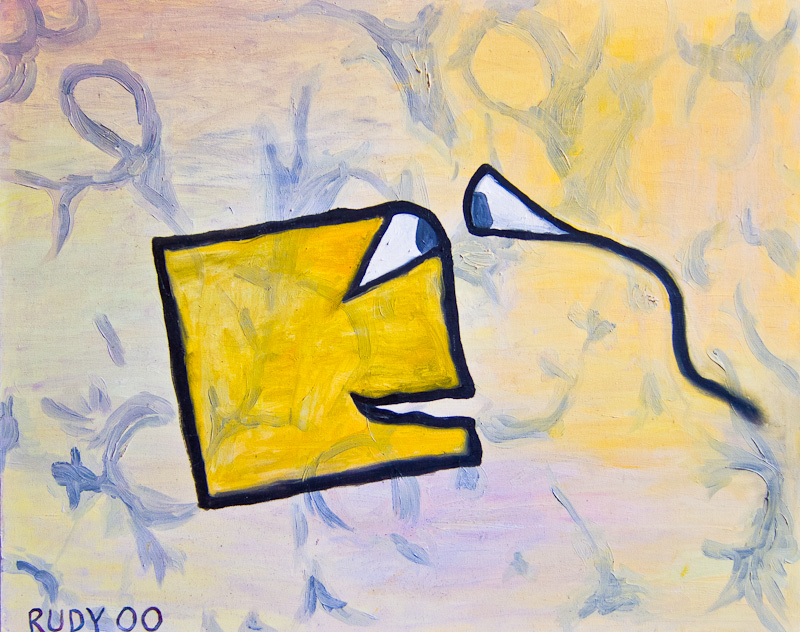
The core 4D book that most people know about is Edwin Abbott Abbott’s Flatland of 1888. It’s what we might now call a first-person science-fiction or fantasy novel, narrated by A Square, who lives on a plane called Flatland. A 3D sphere shows herself to our Square by passing through his plane, and then she lifts him out into “higher space” (that is, into three-dimensional space) and he looks down upon his world and sees…the insides of things. I kind of took off on this in my novel Spaceland.
Perhaps the fact that Abbott was a clergyman helped promote a movement to start thinking of the supernatural in terms of the fourth dimension—and this is one of the key notions in White’s book. The following quote, and all the others, are from his Other Worlds.
It was not that Abbott thought spirits existed in a higher, fourth dimension, though other Christians would make such arguments, as we will see. It was more that the overall aim of the Flatland narrative was to expand the imagination, to show that extra-empirical realms might exist. “I hope,” Abbott once commented about Flatland, that it “may prove suggestive . . . to those Spacelanders of moderate and modest minds who—speaking of that which is of the highest importance but lies beyond experience—decline to say on the one hand that ‘This can never be,’ and on the other hand, ‘It must needs be precisely thus, and we know all about it.’ ” Elsewhere he arrived at a similar formulation, saying that he hoped to help others “conceive that there may be a Thoughtland, as much more real than Factland as the land of three dimensions seems to us more real than the land of two.”

There’s a countervailing notion of the fourth dimension, which even now we still see in Lovecraft—the fourth dimension as a crazy, almost evil concept. I myself have taken some flak about this over the years. “Won’t the fourth dimension drive you crazy?” White:
Contemporary fiction also dealt at length with the idea that the fourth dimension could be an unhealthy obsession, though the topic was sometimes dealt with humorously. (One notice in Life Magazine from 1912, for example, warned readers about professors who taught esoteric higher-dimensional notions that entangled one’s mental faculties.) Though Howard Hinton denied that developing fourth-dimensional vision caused mental problems, he often encountered these criticisms. It did not help that there were widely publicized cases linking fourth-dimensional enthusiasms and mental illness, including one notice, picked up by a number of British newspapers, that an Oxford undergraduate and son of a local priest committed suicide after studying the fourth dimension. Newspapers reported his brother saying that the evening before the suicide the troubled undergraduate “wished to discuss the ‘fourth dimension,’ and higher mathematics. He was very excited. The next morning, he was very white, and his eyes were staring. He said he had been out of his mind, but was then sane, and that he knew it at that time, but might forget it.” Did transcending normal perceptual abilities make one unfit for regular, three-dimensional life?

The fourth dimension is of course invoked in the Minkowski-Einstein notion of spacetime, as used in the theory of Relativity. But it’s not really time that true aficionados of the fourth dimension are after. We want to think of a different space direction. So, yes, time is like a higher dimension, but we want four dimensions of actual space. This notion had early currency among physicists as well. White:
While many mathematicians and scientists did not embrace the fourth dimension as a pathway to ecstatic religious visions the concept nevertheless did important imaginative work for them. Some, including the mathematical physicists James Clerk Maxwell and Peter Tait and the Canadian-American mathematician and astronomer Simon Newcomb, seemed to think that the fourth-dimension concept made the existence of heaven or a spirit world more plausible. In The Unseen Universe, for example, Tait and his coauthor speculated that the soul was like a knotted vortex ring that came from an invisible dimension.
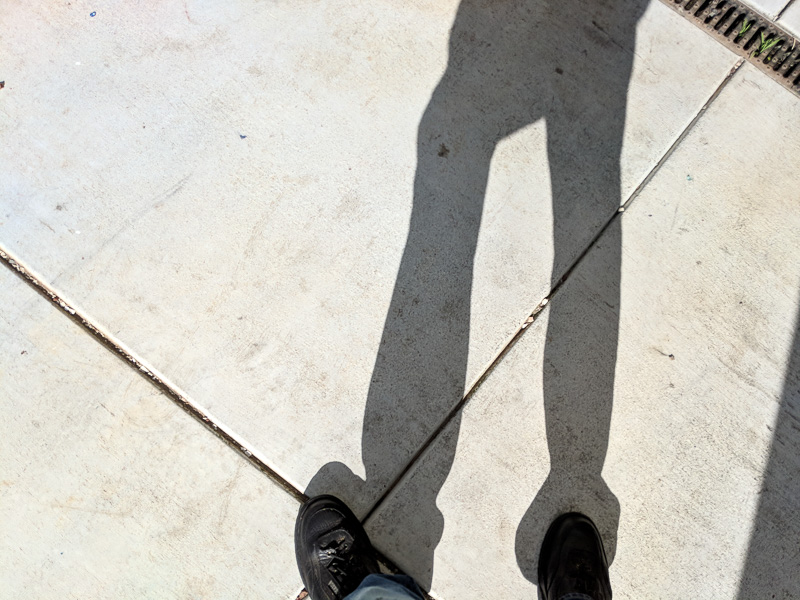
One of my favorite writers on the fourth dimension is Charles Howard Hinton, indeed I once edited a book of his essays and somewhat science-fictional stories. Hinton also appears as a character in my novel Jim and the Flims. Here’s White’s very dramatic account of Hinton’s death.
On April 30, 1907, C. Howard Hinton and his wife Mary attended the annual dinner of the Society of Philanthropic Inquiry in Washington, D.C. Hinton did not know it, but it would be not just his last time socializing with friends but also his final exit from three-dimensional existence. The evening began auspiciously, with printed programs that featured Hinton’s talk at the end of the night. When his turn came, Hinton stood up and gave what his wife remembered, writing in a sad letter to William James, as a “wonderful speech.” By the end of it, however, something was wrong. Hinton finished his remarks, walked out of the banquet, and fell to the ground dead. Hinton generally promised a lot, but that evening’s remarks were particularly ambitious—a brief talk, the program announced, on “Psychic Entrance into Life in the Fourth Dimension or Heaven or any Other Place.” On this occasion at least, Hinton succeeded in ways no one could have imagined.
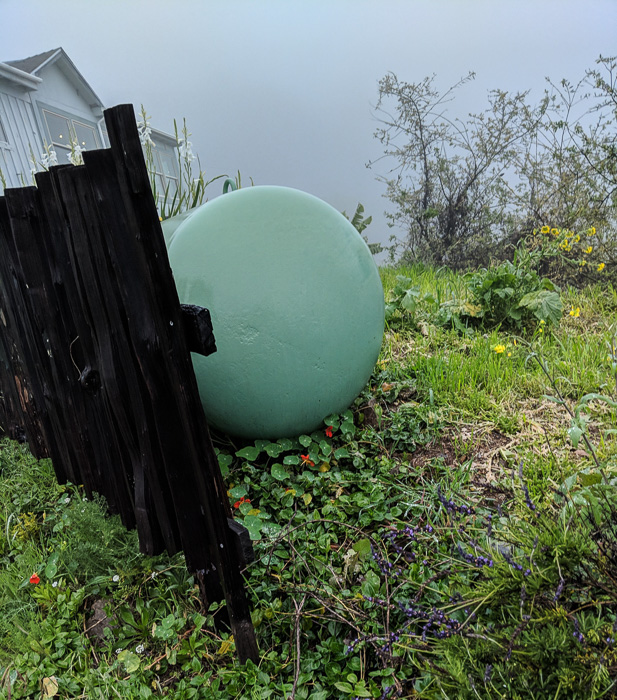
In the early 1900s, numerous ministers began drawing on notion of the fourth dimension as a symbol or even an explanation of God, heaven, and the afterlife.
There was nothing specifically Christian about higher-dimensional notions. In fact, most people who used higher dimensions did so not to buttress Christian doctrines but to argue for more general spiritual notions such as the existence of a spirit world, life after death, or transcendent intuitions and visions. Certain that modern people needed religious ideas even if they could not accept them on dogmatic authority, W. F. Tyler argued in a thoughtful book on The Dimensional Idea as an Aid to Religion (1907) that the dimensional idea might “be grafted on to any existing religion,” lifting all religious believers out of the “quagmire” of superstition and irrationality.

The Russian mystic writer Pieter D. Ouspensky is another key figure in four-dimensional thought. I was a great student of his work when I was younger. White:
In 1909 the Russian mystic and fourth-dimensional philosopher Pieter D. Ouspensky moved to St. Petersburg, where he held court at a bar called the Stray Dog, a seedy, foul-smelling, and badly lit bar where metaphysical seekers talked all night long. The Stray Dog crowd called him “Ouspensky Fourth Dimension” and dancers, poets, painters, musicians, and radicals came to smoke, drink, and listen, day and night, as Ouspensky expounded with authority on the Tarot, yoga, “reality,” time, consciousness, God, and higher dimensions. Even Leo Tolstoy listened patiently over lunch one day as Ouspensky drew multidimensional diagrams on the tablecloth. This metaphysical bar chatter was collected in Ouspensky’s The Fourth Dimension (1909) and Tertium Organum (1911). As one who had experienced altered states of consciousness that were both frightening and revelatory, Ouspensky spoke with some authority. He studied James’s Varieties of Religious Experience and other books on consciousness, and he experimented with nitrous oxide and hashish. His experiences varied.
I well remember one of Ouspensky’s essays on “Experimental Mysticism.” He talks about how after one of his “experiments.” he awoke with the unpleasant sensation that everything was made of splintery, rough wood. Every pot-smoker knows this feeling all to well.
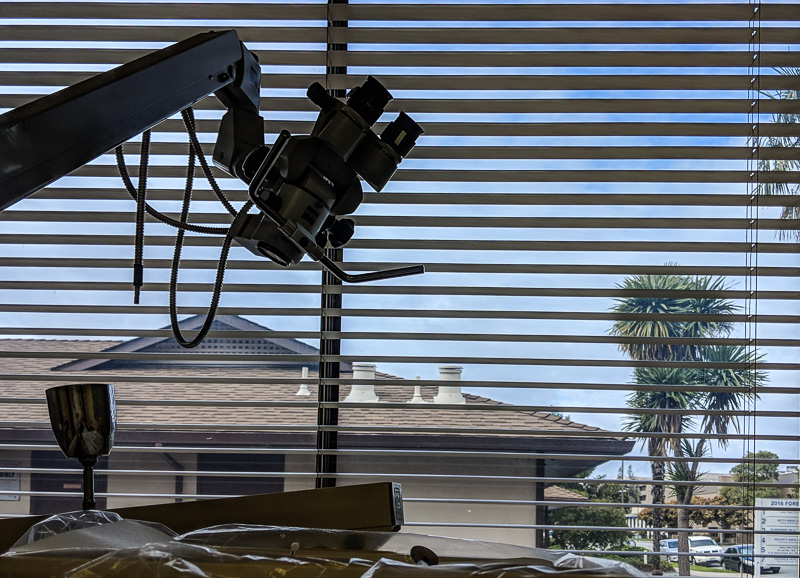
Claude Bragdon was another early favorite of mine. I studied his work while writing my very first book, Geometry, Relativity, and the Fourth Dimension. , which is still in print from Dover Books, having sold an astounding 200,000 copies. (I got $1000 for the rights back in 1976.) White:
The Rochester architect Claude Bragdon believed that specific types of art and design could help people develop this kind of higher-dimensional sight. His pen and ink renderings, for instance, instead of using vanishing-point perspective, were isometric, employing a kind of perspective in which objects that are drawn seem to oscillate between different views. Isometric drawings oscillate in this way because parallel lines are drawn parallel on the page instead of receding in a triangle toward a vanishing point. There are a number of famous examples of isometric depth ambiguity, such as Escher’s drawings [and the Necker Cube], which have unstable corners and thus cause the eye to move between different views. Bragdon used the technique because it put the viewer in simultaneous multiple positions vis-a-vis the drawing, forcing a kind of higher vision upon the viewer: The viewer saw different sides of a thing at once.
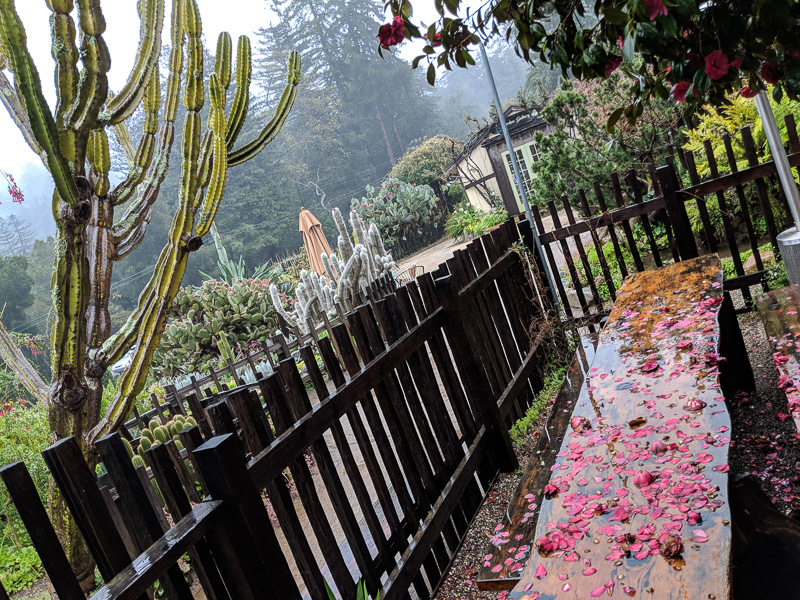
And here’s more:
After 1919 … Bragdon turned to the theater as a way to develop spiritual spaces and narratives. A Broadway actor, manager, and (later) film actor, Hampden asked Bragdon to be the artistic director of his production of Hamlet.
This involved designing everything—all the costumes, sets, stage elements, and lighting. The close friendship between the two turned into a successful collaboration, and by 1923 Bragdon had closed his architectural practice in Rochester and moved to New York City, where he became a full-time stage designer. He moved into the Shelton Hotel, sharing the building and often his breakfast table with Alfred Stieglitz, Georgia O’Keeffe, and other likeminded artists, writers, and spiritual seekers.

As I discuss in my book The Fourth Dimension, that magic cupboard in C. S. Lewis’s Narnia books is a magic door to another world. As it happens, the physicists have designed such a construct, a kind of tunnel that leads from one sheet of reality to the next—it’s called an Einstein-Rosen bridge.
Religion was another great interest of C. S. Lewis’s, and here White discusses that.
At some point Lewis annotated and underlined copies of Flatland and Hinton’s New Era of Thought. At different times he spoke of Flatland in particular as a modern classic—“the original manuscript of the Iliad,” he once proclaimed, “could not be more precious.” He used dimensional ideas to argue that nature was open and layered rather than closed and determined. In his book On Miracles, for instance, he used dimensional ideas to argue that nature was “perforated” and “pock-marked” rather than closed, as logical positivists and scientific materialists insisted. Like Abbott and other theists, Lewis knew that in order to persuade others about the existence of a higher, spiritual realm (not to mention miraculous incursions from that realm) he would have to advocate for a universe that was open-ended.

In Madeleine L’Engle’s books such as Wrinkle in Time, tesseracts become passageways between worlds—and now there’s a hugely popular movie about it. Her ideas were drawn from the earlier 4D philosphers such as Hinton. White:
The word “tesseract,” of course, was Hinton’s term for a hypercube, and in many ways L’Engle continued in the tradition of Hinton enthusiasts deploying this mystical object in order to glimpse higher realities. In Wrinkle, Mr. Murray and other government scientists had studied tesseracts and had had some success in creating them. Mr. Murray had “tessered” through the universe, in fact, landing, unfortunately, on an evil planet where he was now imprisoned. When the Mrs. Ws began their search for Mr. Murray with Meg, Charles Wallace, and Calvin O’Keefe, they explained tessering to them as a folding or wrinkling of spacetime. Mrs. Who lifted the hem of her skirt and stretched it into a straight line. She told the children to imagine an ant traveling along the hem. It would take a long time to travel straight across, but imagine if the path itself could be folded and its two ends brought together? If this were the case, the ant could very quickly travel from one end to the other. Tessering, she said was folding the fabric of spacetime to create new, shorter paths between destinations. When Meg complained that she did not understand, Mrs. Whatsit said that Meg was thinking of space “only in three dimensions,” and that tessering involved higher levels of spacetime. This led to a lengthy lesson on dimensionality that would have made Hinton proud.
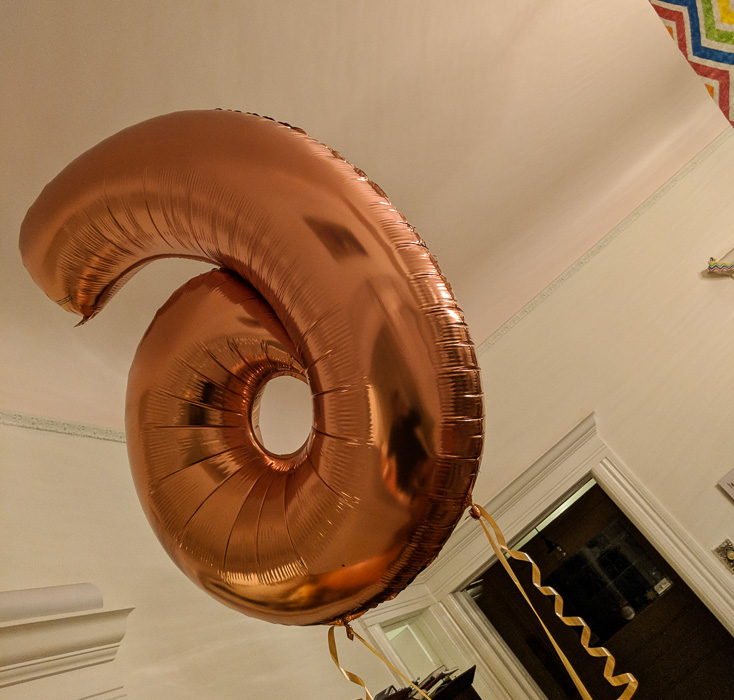
White has a final chapter discussing various oddly hyperspatial ways to think about contemporary media.
A sense of mystery surrounded how moving images and information were transmitted invisibly and received by television antennae. In fact when televisual technologies emerged they were understood by many as a type of psychic seeing-at-a-distance. Stefan Andriopoulos has argued that the arrival of the television in Europe in the 1930s was facilitated not just by advances in engineering and physics but also by occult beliefs and practices related to telepathy, telesight, and clairvoyance. The imaginative insight and technical knowledge that made electrical television possible, he has shown, developed in part from “occultist studies on psychic ‘clairvoyance’ (Hellsehen) and ‘television’ (Fernsehen), carried out in the same period by spiritualists who emulated the rules and procedures of science.” When early electrical televisions brought wireless moving pictures into peoples’ homes many wondered if this was a new way of bringing the “supernatural or marvelous in one’s own living room.” Televisions were like crystal balls or the magic mirrors of fairy tales.
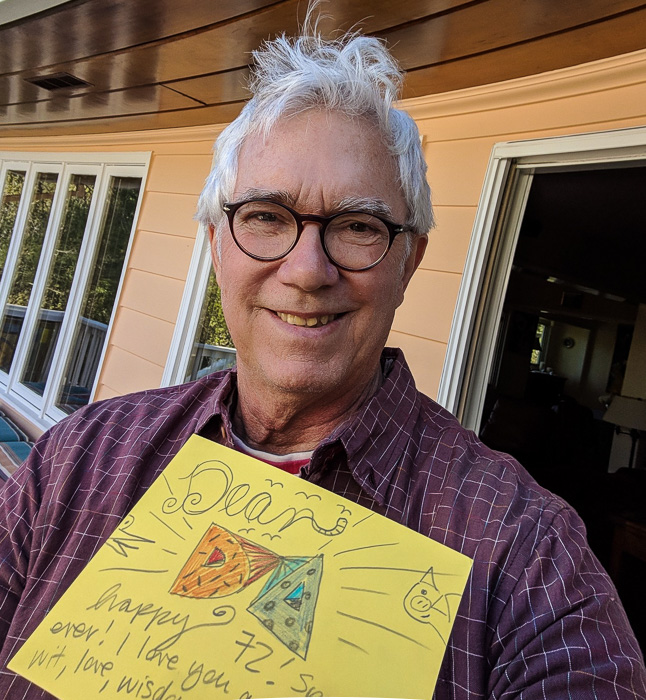
So, yeah, Other Worlds is a wonderful book. Here’s a photo me with a 72nd birhtday card from my daughter. I feel kind of nostalgic, recommending a young writer’s 4D book. Like I’m passing the baton. One of the first writers on the fourth dimension whom I encountered was the redoubtable Martin Gardner, who ran the “Mathematical Games” column in Scientific American all through my youth. He was a great hero of mine and, eventually, my mentor. When he retired from writing his column in 1981, I managed to get a freelance writing gig to interview him for a magazine called Science 81. And when I told Martin I was working on a book about the fourth dimension, he loaded me down with about a dozen rare old 4D books—on loan. And the next year he wrote a great intro for my book, The Fourth Dimension, which I mentioned above. And now it’s Chris White’s turn.
And so I bid a hail and farewell to all the great 4D thinkers up and down the timeline!









April 26th, 2018 at 12:47 am
Interestingly, there’s another recently released book on a similar theme: Emergence of the Fourth Dimension: Higher Spatial Thinking in the Fin de Siecle / Mark Blacklock – Oxford University Press, 2018 ISBN 9780198755487.
I haven’t read it but it’s on my desk right now – it’s a revision of the author’s dissertation and mainly a work of literary criticism focusing on the works of Joseph Conrad, Ford Madox Ford, H.G. Wells and H.P. Lovecraft (of course)
April 26th, 2018 at 3:26 am
Hi,
After a lecture, of a friend of mine, on holographic (Gabor) and why we are attracted by this material I went into a book market and I saw “the fourth dimension”.
I’m writing from itay so the name of the book here is “la quarta dimensione”.
Just wanna say thanks!
It’s seems that we can be friends
April 26th, 2018 at 10:42 am
I have a hard enough time understanding what 3-d is, forget 4-d. What is a dimension anyway? I’m stumped on how is it there are any dimensions, whatever they are.
June 2nd, 2018 at 1:18 am
Search for “3D Euclidean Geometry through Conformal Geometric Algebra (a GAViewer tutorial)” for an easy (no, really) introduction to using 5D to understand 3D, with a nice bit of visualization software to play with. The extra dimensions, “origin” and “infinity”, are null-square and formed from the sum and difference of (+-) signature dimensions added to the usual (+++) 3D. Actually, this is using a Clifford Algebra which has all the possible products of the 5 basis vectors, so is 32-dimensional in a sense, but really it’s not too complicated and very useful for computer graphics.
The same space was used by José B. Almeida in his underappreciated “Can physics laws be derived from monogenic functions?”, which augments the usual Minkowski space with proper time, which has the same sign of its square as the spatial dimensions, giving General Relativity as optics in a 4D Euclidean space. (Also QM and cosmology)